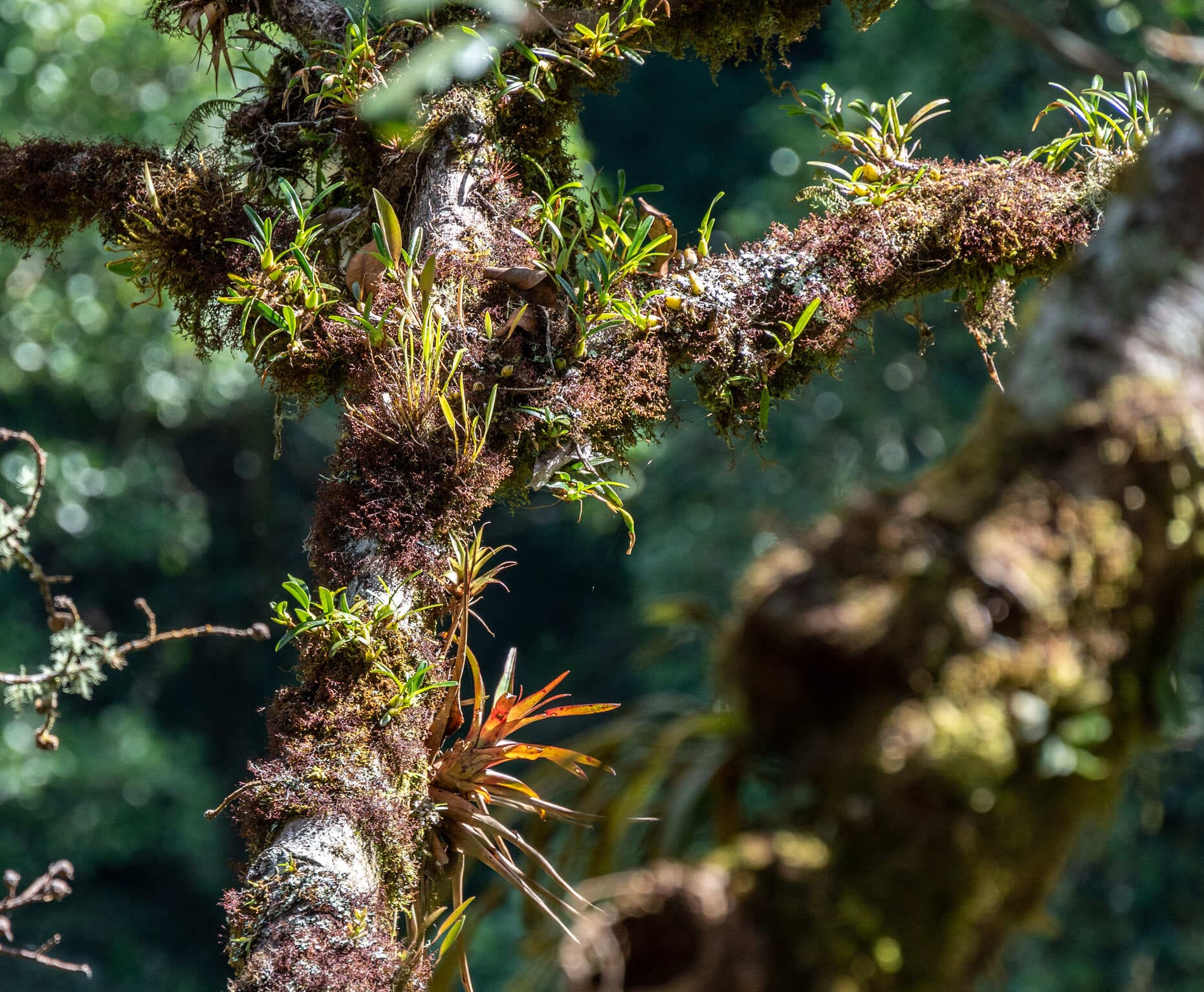Epiphytic plants are by essence plants that are not self-supporting, that spend their entire life cycle on the support on which they germinate and that have no interactions other than physical with the supporting tree. There are other forms of plant that depend on a support to thrive, but which, unlike ‘true’ epiphytes (or holo-epiphytes), are grounded at some point in their life cycle: firstly, those that germinate on the ground and retain this connection while colonising the support (herbaceous or woody lianas); secondly, those that germinate on the support and later root to the ground (primary hemi-epiphytes); and finally, those that germinate on the ground and free themselves from this terrestrial connection at a later stage in their growth, with degeneration of the proximal part of the stem (secondary hemi-epiphytes). Some epiphytes can also be considered ‘accidental’ when these plants grow mainly on the ground and are only rarely seen in trees.
The structure of the epiphytic plant community in a tree is strongly influenced by vertical gradients in abiotic conditions (inter-crossing and partially opposing gradients in light, temperature, humidity and nutrient supply), but also by horizontal gradients, from the inner crown (shaded, older and less dynamic) to the outer crown (sun exposed, younger and more dynamic). Dependence on the supporting tree implies that epiphytes are also strongly affected by the three-dimensional structure of the tree and its own dynamics.





